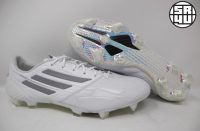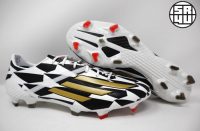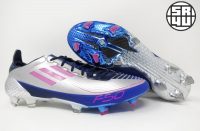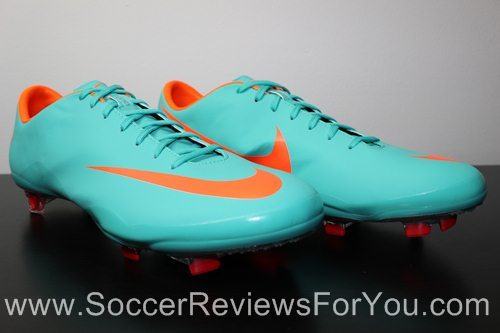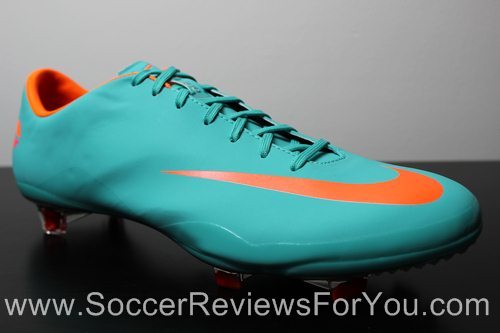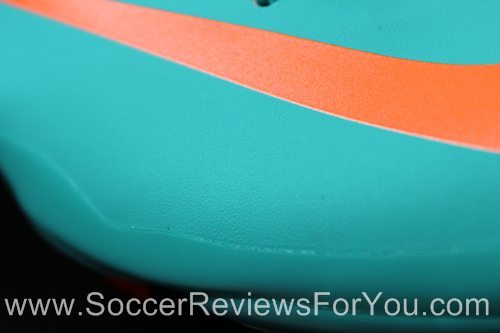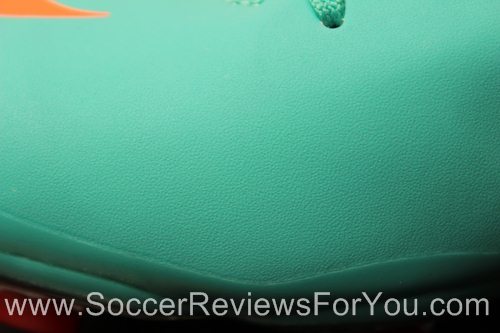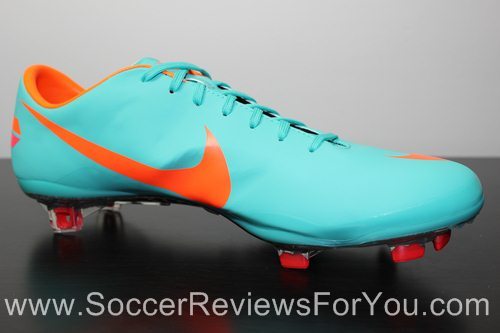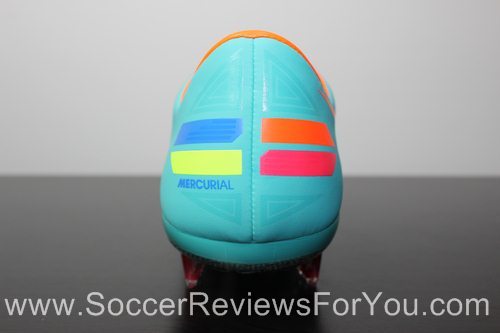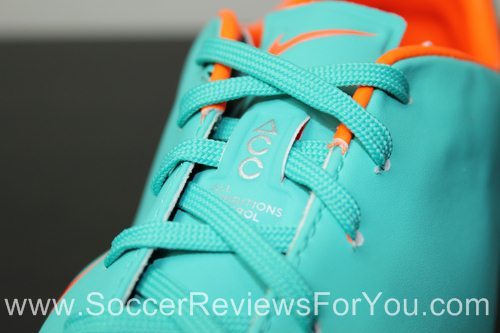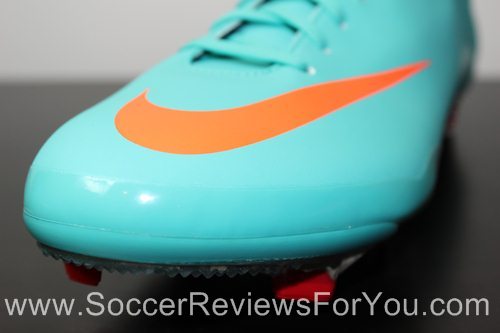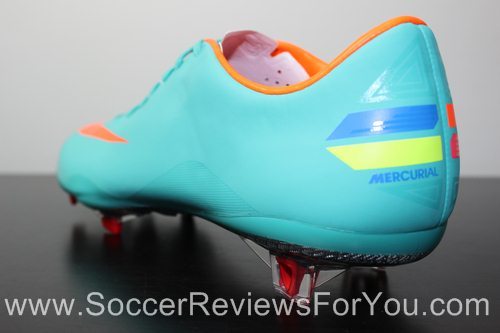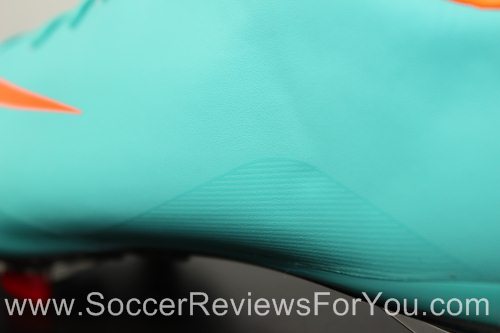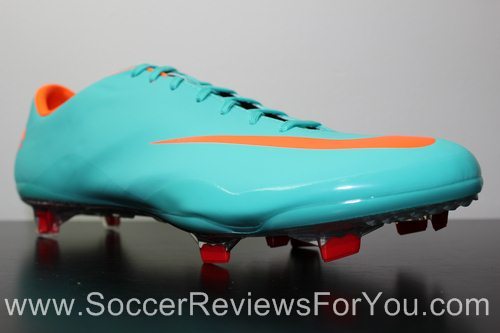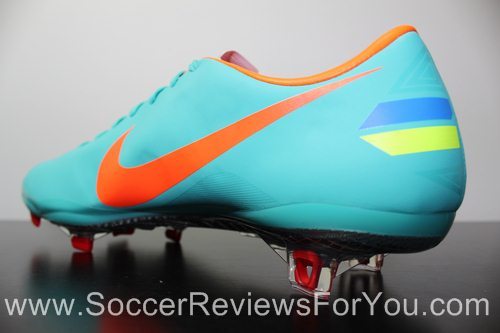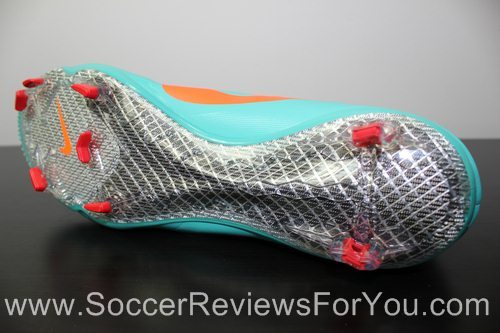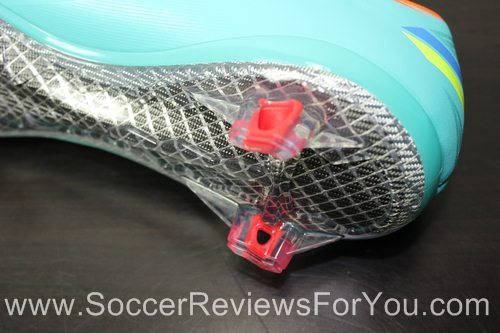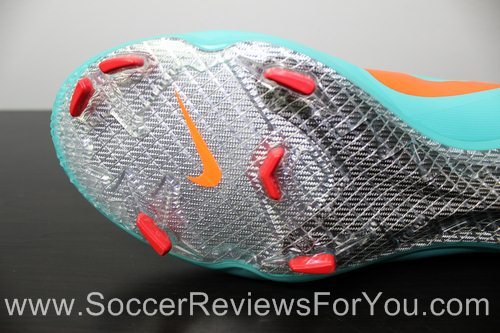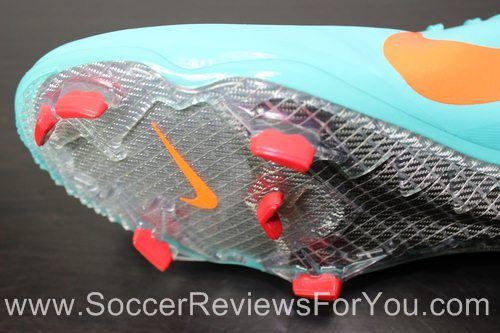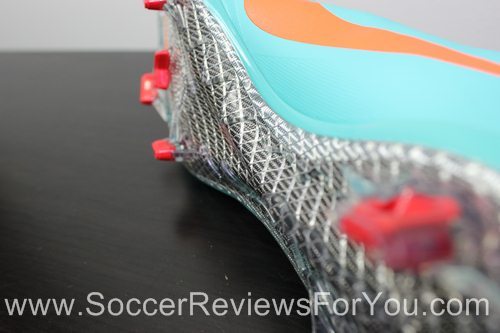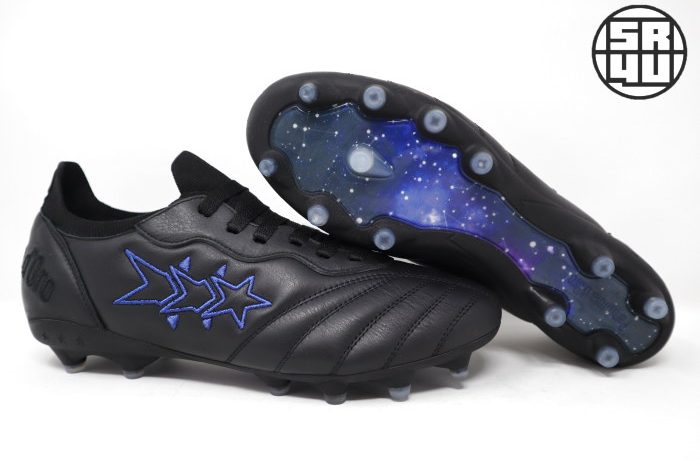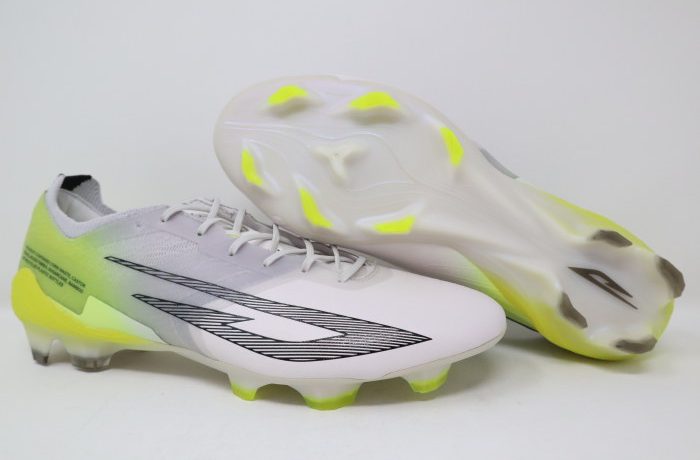Nike Mercurial Vapor VIII ACC Firm Ground Review
Nike has once again changed the game with the 8th edition of the incredibly popular Mercurial line. The Nike Mercurial Vapor VIII is impressive for so many reasons, but one of my favorite features is how comfortable they are and how well they fit. Ever since the Vapor IV, the Vapor seemed to be getting wider and wider with each new edition, which is not a bad thing, but Nike has gone back to what the Vapor used to be with the Vapor VIII, a very tight fitting shoe that hugs your foot. This means that unlike the last Vapor, the VIII is much more narrow fitting all the way through, similar to the Superfly III. Nike seemed to have brought back the shape of the Vapor III, one of the favorites for many long time Vapor wearers, where the mid-foot and toe box are much more narrow fitting. The mid-foot of the shoe is about a medium width at best, while the toe box is significantly smaller and a little more pointy than what you might be used too. The slightly sharper toe may cause some confusion about with sizing, but trust me when I say that these fit true to size. From brand new, the sides of the toe box are very narrow, which does not allow the front of your toes to push up against the front of the shoe, as they should. Don’t worry, because once you give the shoe just a little time to break-in, the upper will stretch ever so slightly and you will be left with a perfect fit, no need to go up half a size. As far as sizing is concerned, the Vapor VIII fit completely true to size, as I wore my usual size 9US for review. Like I said earlier, if you have a wider foot, or even struggled to fit into a previous model of the Vapor, the VIII may not be wide enough for you, and while the upper will expand just a little, the width in the mid-foot is not going to change.
Given that you do not have an overly wide foot, the Vapor VIII is easily one of the most comfortable and well fitting lightweight soccer shoes on the market. Part of the reason for such great comfort has to be the new Teijin synthetic upper. The Teijin upper that has been used on the Vapor has pretty much stayed the same ever since it came into existence, but on the Vapor VIII, we have what is essentially Teijin 2.0. The upper truly is something that has never been done before. I have said in the past that I felt that Nike were the king of synthetics, and the Vapor VIII only further proves that point, as I would go as far as to say that the upper on the VIII is more impressive than Nike’s own Kanga-Lite synthetic, used on all of Nike’s other boots. This version of the Teijin upper is much thinner, much softer and more flexible than past Vapors, and is truly and honestly the first ever Vapor that is game-ready from right out of the box. I didn’t have any issues with discomfort, no rubbing spots or anything, and that was after wearing them for 3 hours straight, from brand new. The new glass-fiber sole is also an improvement over that of the Vapor VII, in that it is much more flexible. The forefoot section of the soleplate is a single layer of glass-fiber, making for a very flexible feel, while the mid-foot and heel area uses two layers of glass-fiber to maintain stiffness. I was a little worried about stud pressure, given the length of the studs and how little of them there actually are, but the sole does an excellent job of dispersing pressure. If I had one complaint it would be some insole slippage, but that is an easy fix, and not a huge problem. Overall, I can say with confidence that the Vapor VIII is one of the most comfortable ultra-lightweight soccer shoes on the market, given that you have the correct foot for them.
Weight
The Mercurial line has always been based around being lightweight, making the 8oz mark the standard in lightweight soccer shoes. With more and more innovations from other companies, like Adidas with the adizero, the bar for lightweight soccer shoes has now been set much higher, and the Vapor VIII is Nike’s first attempt since the Vapor IV to really make an effort to shed some weight off of the Vapor, and wow have they done that. The Vapor VIII weighs in at a very impressive 6.6oz, which is about 1.5oz less than the previous Vapor. If you were to compare this to the actual weight of the synthetic Adidas F50 adizero miCoach, the Vapor VIII weighs exactly the same! While there are still slightly lighter options out on the market, none of them are as supportive or fit as nicely as the Vapor VIII. Usually the tighter the fit, the lighter the shoe feels, so when a shoe fits perfectly, like the Vapor VIII, and is lightweight, I think you can imagine how they feel on your feet.
Traction
Firm ground stud patterns are becoming more and more unusual, and the Vapor VIII probably wins the award for the most unique. Nike has always played around with the stud pattern of the Mercurial line, with redesign on the Vapor VI and the Sense Studs used on the Superfly II and III, but never has it been changed to the point where there is almost nothing similar to the previous model. The stud pattern on the Vapor VIII essentially uses a six-stud formation. Starting from the back, you will immediately notice that there are only two bladed studs, as opposed to the usual four studs that you would get from past Vapors, or pretty much every other firm ground stud pattern out there. The blades themselves are not particularly large, but they are well supported, with clear plastic strips running off of each side of the stud. Moving to the forefoot, you will find a single blade positioned right under the ball of your foot, as well as a parallel single blade on the outside of the foot, with one open “V” shaped stud in the middle. On the inside at the toe, you get you get two blades that are very close to each other, one positioned to push off to the outside and the other to push off going forward, while the last stud is on the outside of the toe, slightly further back, positioned at about a 45 degree angle. If your were to put these shoes on and stand on a regular floor, it might feel a little weird, but once you set foot on a grass field, the stud pattern on the Vapor VIII begins to make sense. Obviously with only six studs, excluding the middle support stud, under your feet, you might think that stability would be an issue on firm ground, but surprisingly, there are no issues at all. The stud pattern really feels as if it were designed for pushing off and accelerating, something that the Vapor stud patterns have always done very well. Since there are only six studs under your feet, you really have a good idea of where the traction is under your feet, which allows you to really push off hard, confident that there is something there for you to push off of. The VIII stud pattern really seems to be based around feel, and when you can feel the grip, you can more easily push your limits. It is also worth noting how narrow and sharp that the actual blades are on the Vapor VIII, which is part of the reason why they do dig in so well. As far as what ground these are best suited for, I would definitely say that softer to firm ground is where they are going to feel the best. This is not a stud pattern that you should be wearing on artificial grass, or turf, nor should you wear the SG-Pro version of these types of fields. As far as pushing off and feeling the grip, I don’t think that I have ever worn anything quite as good as the stud pattern on the Vapor VIII.
Touch
We’ve already seen two versions of the Nike Mercurial Vapor VIII, and now we have three. The latest version boasts one major new feature, and that is the inclusion of Nike’s ACC technology. ACC, which stands for All Conditions Control, is essentially a wet weather “control” element. This was a feature that was previously only found on the Nike CTR360 Maestri III, but Nike have now included on Mercurial Vapor VIII, T90 Laser IV and Tiempo Legend IV. What ACC is designed to do, is provide superior friction, or control, on the ball in wet playing conditions. Think of it as a “wet weather” control element, allowing for the best possible touch on the ball in all types of playing conditions. Basically, it doesn’t allow water to sit on the outside layer of the upper, so you won’t have as slick of a touch on the ball when playing in the wet. ACC itself, is not actually a coating either, but is actually something that is permeated to the upper itself. The process by Nike is pretty secretive, but we do know that ACC is actually in the makeup of the Teijin Synthetic upper, rather than being a coating that can wear away.
So, does it work? The answer to that is not exactly straight forward, because it does what it is supposed to do, but at the end of the day, control is down to the player and not the shoe. The Teijin Synthetic upper is the same as the original two releases, but with a slightly different finish. The original release featured a suede-like finish, while the second release featured a faux leather finish to the upper. The ACC version is almost a combination of the two, where it almost looks like a faux leather finish, but is slightly soft to the touch, like the version with the suede finish. For a better idea of what I am talking about, take a look at some of the close up images above. As far as the feel on the ball is concerned, there honestly isn’t much of difference in terms of feel between all three versions, unless you’re playing in the wet. When there is no water involved, it could be argued that the ACC version does have a slightly more grippy feel on the ball than the other two upper variations, but not to the point where it drastically changes the feel of the boot. If you are going into the ACC Vapor VIII having worn one of the previous versions, than you will notice a very slight difference, in terms of ball feel. If the ACC Vapor VIII is your first Vapor VIII, nothing is going to feel out of the ordinary.
When playing in wet weather, I noticed that the outside of the upper remains much less slick on the ACC model, in comparison to the non-ACC versions. The ball doesn’t feel as slick against your foot when playing in wet weather, but again, the difference is not as significant as you might think. I would still argue that thin, synthetic boots are the most difficult to use when playing in the wet, as opposed to using a shoe with a more cushioned feel to the upper.
All in all, the ACC Vapor VIII does offer some extra “benefits”, if you can call them that, in comparison to the non-ACC versions of the Vapor VIII. Does ACC make the Vapor VIII that much better? The answer is no, but it is a feature that I would rather have on my shoe, than not have.
Shooting
Shooting in the Vapor VIII is also really great. There is, as I said earlier, a feeling of precision when a shoe is so thin and fits so tightly. When you strike the ball, you can feel every bit of the shot, from the first impact between your foot and the ball, to when the ball leaves your foot. What is also unique about the Vapor VIII is that out of all of the ultra-lightweight soccer shoes out of the market, these easily have the stiffest soleplate. If you look at how the soleplate is shaped, the mid-foot pinches in, which makes for a narrow fit, and a rigid sole. Also keep in mind that the mid-foot also has two layers of glass fiber, so there is plenty of stiffness. You get that thin, lightweight feel, while also getting that solidness from the sole, which is great.
Durability
The Vapor VIII has been a relatively mixed bag when it comes to durability. While I do think that the majority of the issues that people were having are related to wearing the firm ground, or soft ground, versions of the shoe on artificial grass playing surfaces, Nike has made one small change that should help the issue. Keep in mind that I have worn every single colorway of the Vapor VIII, and have not had any issues with a single pair. The ACC model features a newly added, clear vinyl strip, running along the forefoot and toe box of the shoe, exactly where the upper meets the soleplate. This covers the points on the boot that some people where having issues with, and will allow for a much more solid bond between the soleplate and the upper. I would just like to point out that while the Vapor VIII is a top end soccer shoe with a $200 price tag, it is also designed to be as lightweight as possible, featuring one of the thinnest uppers ever on a soccer shoe. While you should expect your soccer shoes to last, you shouldn’t be overly surprised if your shoes have premature durability issues if you are wearing the same pair of shoes everyday. If you want to get the longest life out of your shoes, especially if you play four or more times a week, get a second pair and use them as a relief pair for your main shoes. Also keep in mind that the firm ground, and SG-Pro, versions of the Nike Mercurial Vapor VIII are not designed for use on artificial grass. Using any firm ground shoe on artificial playing surfaces will severely impact the durability of your shoes.
Protection
If there is one category that all of the lightweight boots always fall short, it is protection. Obviously protection was not a concern when designing a shoe with an upper that is the thickness of a few pieces of paper, so it should not be a surprise that you will not getting much in the way of protection from the Vapor VIII. To put things simply, if you get stepped on, its going to hurt. If you are worried about having your feet protected out on the field, the Vapor VIII is not for you, but if you’re willing to sacrifice protection for feel, than you will get exactly what you asked for.
The Verdict
The Vapor VIII has been established as one of, if not the best, lightweight options on the market. With the introduction of ACC technology, I wouldn’t say that this is a far superior version of the Vapor VIII in comparison to the non-ACC versions, but it does make the shoe that much more appealing. If you’re looking for the ultimate barefoot feel, and a very aggressive stud pattern, than you can’t go wrong with the Nike Mercurial Vapor VIII ACC.
| Comfort/Fit | 10 out of 10 |
| Weight | 10 out of 10 |
| Traction | 10 out of 10 |
| Touch | 10 out of 10 |
| Shooting | 9 out of 10 |
| Protection | 6 out of 10 |
| Durability | 8 out of 10 |
| FINAL SCORE | 63 out of 70 or 90% |


